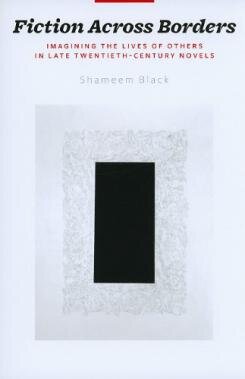Project: Fiction Across Borders
I started working on the idea of “fiction across borders” from a puzzle — one might even say from a point of despair. Postcolonial studies had given us so many important new tools to understand how representations of “others,” in the context of imperialism and other unequal regimes of power, could do real damage. Yet it wasn’t offering us convincing tools for how to move forward: how writers might grapple with social differences without stereotyping, exoticising, or limiting those “others.” I turned to the work of writers from postcolonial and ethnic minority backgrounds to help me develop those tools.
In Fiction Across Borders, I challenge postcolonial habits of critiquing writers for doing damage through the act of writing — for Orientalising, racial or gender stereotyping, and perpetuating other forms of injury that bolster unequal social systems. I argue that writers most effectively confront this challenge not by ignoring it or pretending it’s not a problem, but by confronting this issue head on as part of the story they tell. Often, it’s by allowing the self to become vulnerable that the most transformative forms of imaginative border-crossing can occur.
I’m so grateful to the amazing artist Shahzia Sikander for allowing one of her images to serve as the gateway into my book. When I look at this image, we see that borders are crucial — yet we also see how the “border” is not a line, but a complex space within which we navigate. The intricate journeys within these borderlands, where writers confront head on why it is so hard to imagine others, are the subject of my book.
I built on these ideas through a series of articles that pursued the question of imaginatively engaging with someone else’s life within some of the most vexed contemporary conditions: processes of reconciliation after mass conflict. While there may be good reasons to avoid reflecting on conflicts that happened far away to other people, I also wondered if not reflecting on those conflicts in fact constituted a safe moral position. In a series of articles published in Social Text, History and Memory, and Australian Literary Studies, I explored the sometimes perverse role of “outsiders” in projects of reconciliation and commemoration. In articles for Public Culture and Journal of Human Rights, I looked at the literary legacies pressing in on places where many people seek to make a positive difference for others far away: microfinance websites. In these articles, I aim to weigh what may be valuable about these endeavors, while recognising what remains problematic.
“At the turn of the new millennium, might it be possible to imagine another without doing violence to one’s object of description? ...I argue that these works accomplish these tasks by calling attention to their own representational dilemmas, inviting their readers to question assumptions about identity and imaginative projection that underlie calcified forms of discursive domination. ”
Today, I continue these questions about how, where, and under what conditions we might wish to engage with people, cultural practices, and lived experiences that we consider “different” from ourselves. From the dark material of transitional justice, I’ve moved to explore these questions in more playful fields of practice.
In my work on yoga, I investigate how a bodily practice might serve as a site of imaginative cross-cultural engagement. When I receive calls from the media, it’s often to answer the question “does practicing yoga represent cultural appropriation"? I’ve discussed this issue with ABC National Radio, ABC Life, HuffPost Australia, ITV, On the Record, and numerous other media outlets, and spoken to packed student-organised events at the Australian National University. The ethics of border-crossing are not just abstract; they’re part of daily life.
